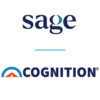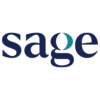An overview of the changes, trends, and newsmakers from the past month
September is a good month this year for taking stock of what’s working well, and planning out how to improve on those initiatives that are lagging, Here’s the stories that caught our eye this month—what about you?
Key industry progress
- ACOs showing slow progress—but progress nonetheless: According to CMS’ recent ACO quality and financial results data release, ACOs receiving shared savings bonuses has increased to 31 percent of participants, compared to 27 percent for 2014. Despite this success, there is still a lot of variation across participants.
- FQHCs seeing lower Medicaid spending: As Medicaid enrollment has expanded following ACA implementation, a new study from the American Journal of Public Health has show that Medicaid spending is up to 24 percent lower for patients receiving care at community health centers.
The interoperability struggle
- New report reveals the true challenge of interoperability: Research from Health 2.0 shows that small health tech companies are having a tough time integrating with big EMR vendors. Until the industry can solve this issue, interoperability will remain a farce.
- Patient connectivity and access will drive future success: As the rest of the world shows great technological progress, the U.S. healthcare industry has remained far behind the curve. That will change—and providers’ ability to succeed in the future will depend on their ability to remotely connect with patients.
- Learning to share: Data and data exchange have become their own currency in healthcare quality and delivery, yet that value is only truly expressed if providers and other stakeholders can learn to effectively share it. As Health Affairs puts it, the culture has to change.
Driving pop health success
- Pop health’s biggest barrier to success? Getting data to work: There’s no denying the potential value that population health initiatives stand to deliver to the healthcare industry, but there’s a major hurdle to overcome before it can truly achieve its goals—namely, ensuring the care delivery system can effectively keep up with the necessary data.
- All hands on deck for pop health: Beyond the demand for data, there’s another element that’s required for pop health success: the alignment and buy-in from stakeholders across the healthcare leadership spectrum.
Learning lessons
- Is the link between care quality and readmissions real?: Readmission have been used as a key punitive data point for hospitals, but new data from Johns Hopkins shows that in some cases, a higher rate of readmission is tied to better outcomes—specifically, an increase in lives saved.
- Is the triple aim enough?: While the triple aim serves as a strong shorthand for driving value-based change, it’s not enough for bending the cost curve in the long term. That will require more of a focus on the factor that exists outside of the health system itself—educating patients and increasing their engagement in the care delivery process.
- Learn the EpiPen lesson: Mylan has come under considerable fire for their steep price increases for their EpiPen—and the days ahead for them seem dark indeed. FireceHealthcare delivers three key lessons that healthcare executives should take from this scandal. First among these? You can’t keep secrets.





